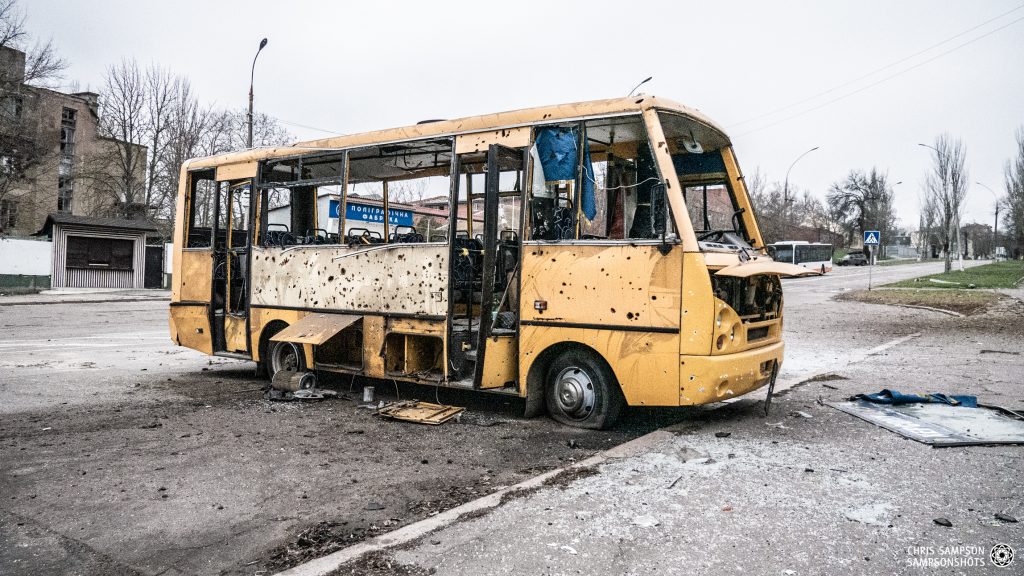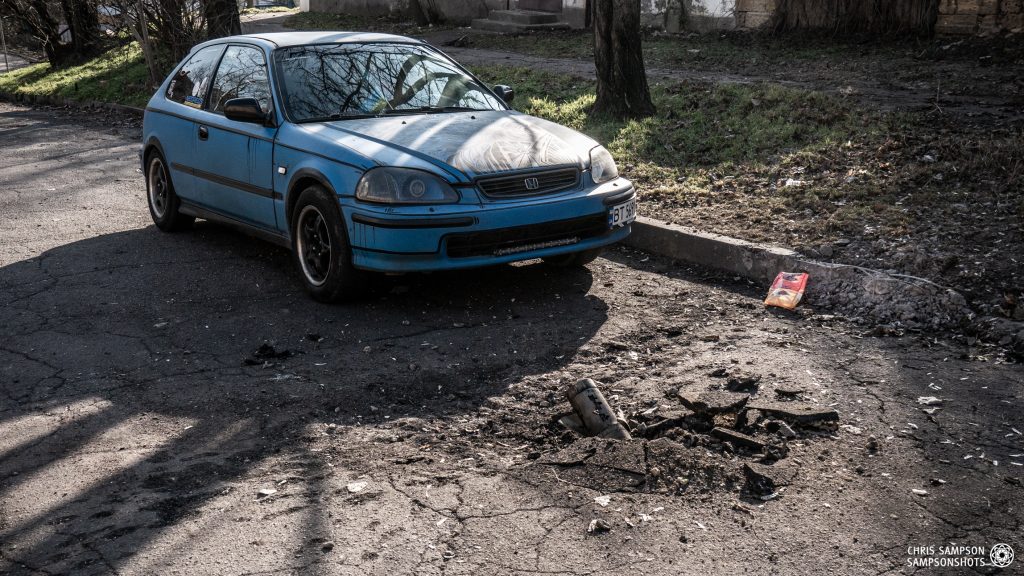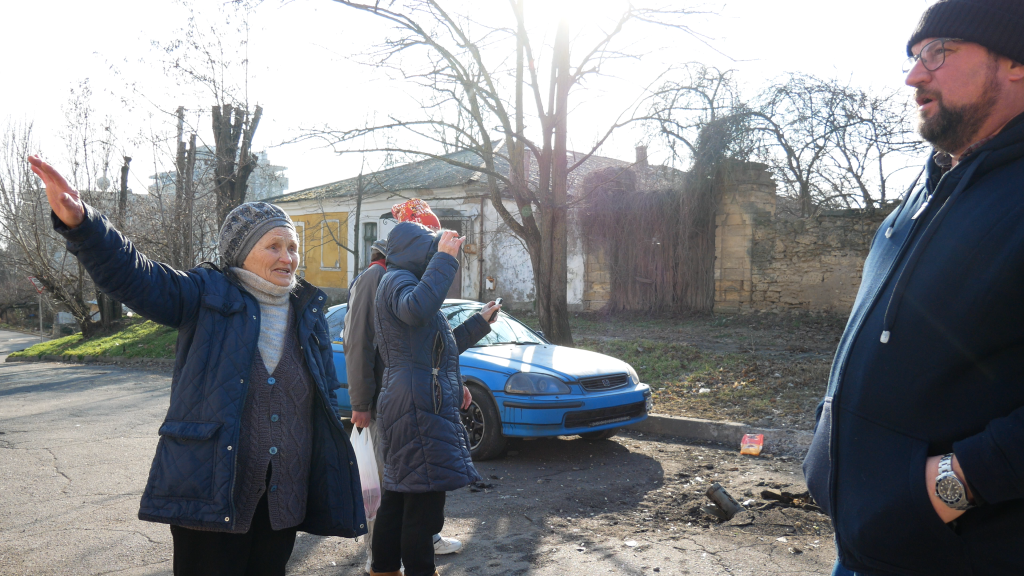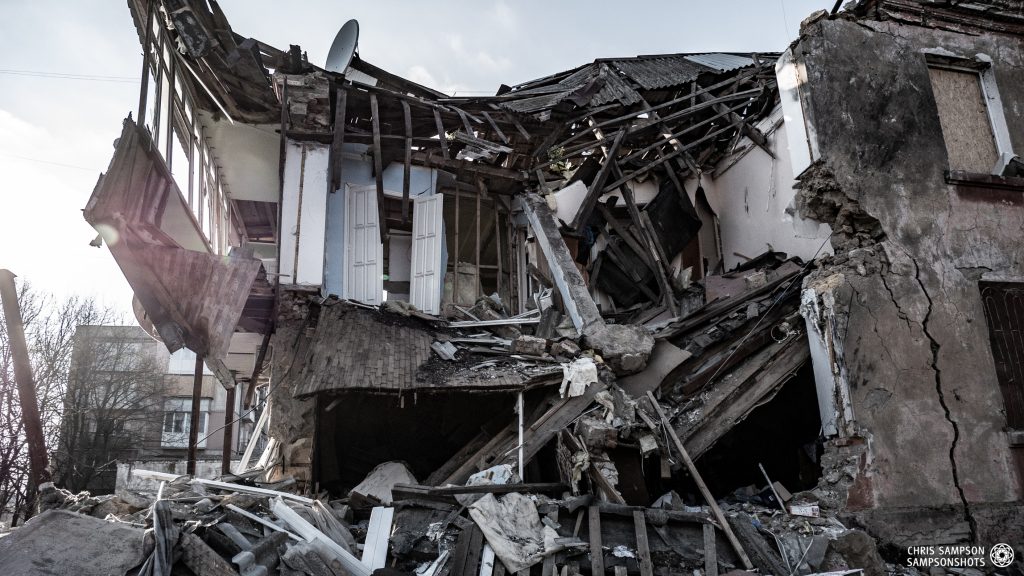THE KHERSON PROJECT
This project aims to investigate these crimes in depth, shedding light on the systematic violations that occurred and the challenges faced by the people of Kherson as they attempted to rebuild their lives.
In 2022, the city of Kherson in southern Ukraine was directly attacked from the beginning of the full scale invasion, with Russian forces capturing it in the early stages of their invasion on March 4, 2022. The city is strategically important due to its location on the Dnipro River and its proximity to the Black Sea.

THE HUMAN RIGHTS ABUSES
During the occupation, human rights violations were the standard operating procedure, including the forced displacement of civilians, abductions, rape and torture of Ukrainian civilians and officials.
Russian forces installed pro-Russian officials and tried to integrate the city into Russian territory, imposing their laws and curtailing the freedoms of the local population.
Kherson became a symbol of the suffering endured by civilians under occupation, with the international community expressing concerns about potential war crimes being committed in the region.

THE LIBERATION OF KHERSON
In November 2022, after months of intense Ukrainian counteroffensives and significant pressure from the ongoing war, Russian forces withdrew from Kherson.
The liberation of the city marked a turning point in the conflict, but the aftermath of the Russian occupation revealed the deep scars left behind.
Investigations into crimes committed by Russian forces in the period before and after the liberation have focused on reports of widespread atrocities.
These include the discovery of mass graves, the continued torture of detainees, and the deliberate destruction of civilian infrastructure, which are war crimes.

THE AFTERMATH AND ONGOING ATTACKS

During the occupation, human rights violations emerged, including the forced displacement of civilians, abductions, and torture of Ukrainian civilians and officials. Russian forces installed pro-Russian officials and tried to integrate the city into Russian territory, imposing their laws and curtailing the freedoms of the local population. Kherson became a symbol of the suffering endured by civilians under occupation, with the international community expressing concerns about potential war crimes being committed in the region.
THE INVASION TIMELINES
A DETAILED TIMELINE SERIES
February 2022
February 24, 2022: Russia launches a full-scale invasion of Ukraine, with attacks occurring on multiple fronts. Kherson, located in southern Ukraine near the Black Sea, becomes a strategic target for Russian forces, as it lies near key supply routes and is important for controlling the region.
February 24-25, 2022: Russian forces begin advancing toward Kherson, moving through the Crimean Peninsula, which had been annexed by Russia in 2014. As Russian troops move closer to the city, local Ukrainian forces and civilian resistance prepare for a possible siege.
February 26-27, 2022: Russian forces reach the outskirts of Kherson, and intense fighting breaks out in the nearby areas. Russian troops aim to secure the city and its surrounding infrastructure, while Ukrainian forces resist, trying to slow down the advance.
February 28, 2022: Kherson’s regional authorities announce that the city is under threat of imminent capture as Russian forces encircle it. Ukrainian citizens begin to flee the city in anticipation of an occupation.
March 2022
March 1-2, 2022: Russian troops continue their assault on Kherson, and Ukrainian resistance in the city intensifies. Local authorities and civilians engage in efforts to hold off the invasion, but Russian forces manage to enter some parts of the city’s outskirts.
March 2-3, 2022: Russian forces complete their encirclement of Kherson, and heavy shelling and airstrikes target civilian infrastructure and military positions. Reports of casualties and widespread damage to homes and businesses start to emerge.
March 3, 2022: Kherson’s mayor and other local officials appeal to the international community, urging them to help defend the city. The Ukrainian military, now heavily outgunned and outnumbered, is forced to pull back from the area.
March 4, 2022: Russian forces capture key infrastructure, including government buildings, bridges, and energy supply facilities. The first signs of occupation are seen as Russian troops raise their flag over significant landmarks.
March 5-10, 2022: The city officially falls under Russian control, with Russian military units consolidating their presence. Russian authorities attempt to impose control by replacing local Ukrainian officials with pro-Russian leaders, while the local population resists in various forms, including protests and civil disobedience.
March 11-15, 2022: Reports from Kherson detail human rights violations and abuses committed by Russian forces, including abductions of Ukrainian civilians, the targeting of Ukrainian military personnel, and the destruction of key infrastructure.
March 16-18, 2022: As Russian control over the city solidifies, the humanitarian situation worsens, with shortages of food, medicine, and basic supplies affecting the population. The city’s residents experience growing restrictions on movement and communications.
March 23, 2022: Kherson is officially declared under Russian control, but ongoing resistance continues, particularly through guerrilla tactics and efforts by local Ukrainians to sabotage Russian operations.
March 29, 2022: Russia begins to hold “referendums” in Kherson and other occupied territories, attempting to legitimize their control. These actions are widely condemned by the international community as illegal and part of Russia’s broader efforts to annex occupied regions.
By the end of March 2022, Kherson was fully under Russian occupation, setting the stage for months of hardships for its residents, as well as international condemnation and efforts to reclaim the city by Ukrainian forces in the later months of 2022.
